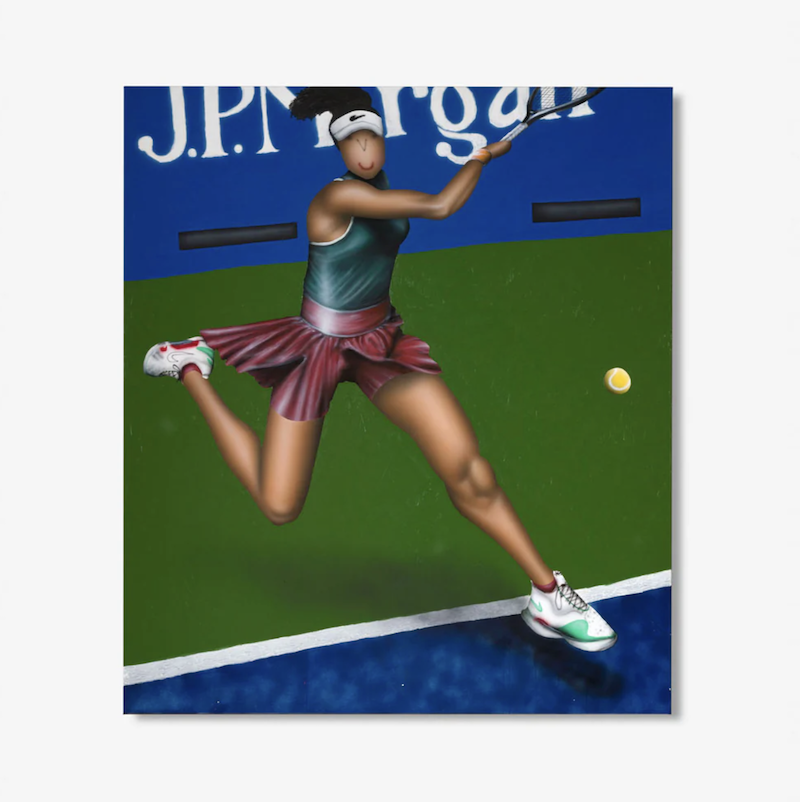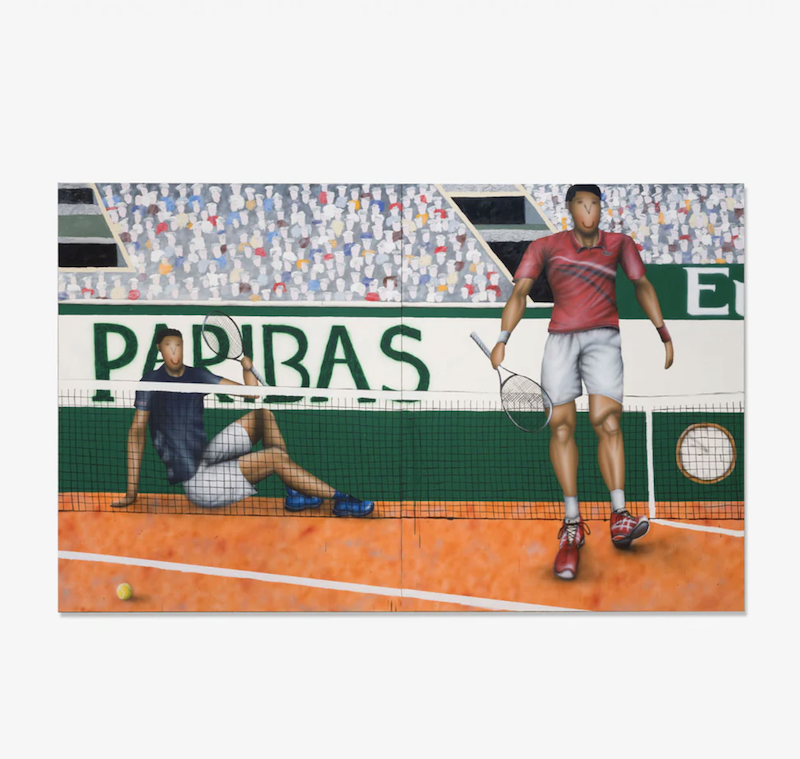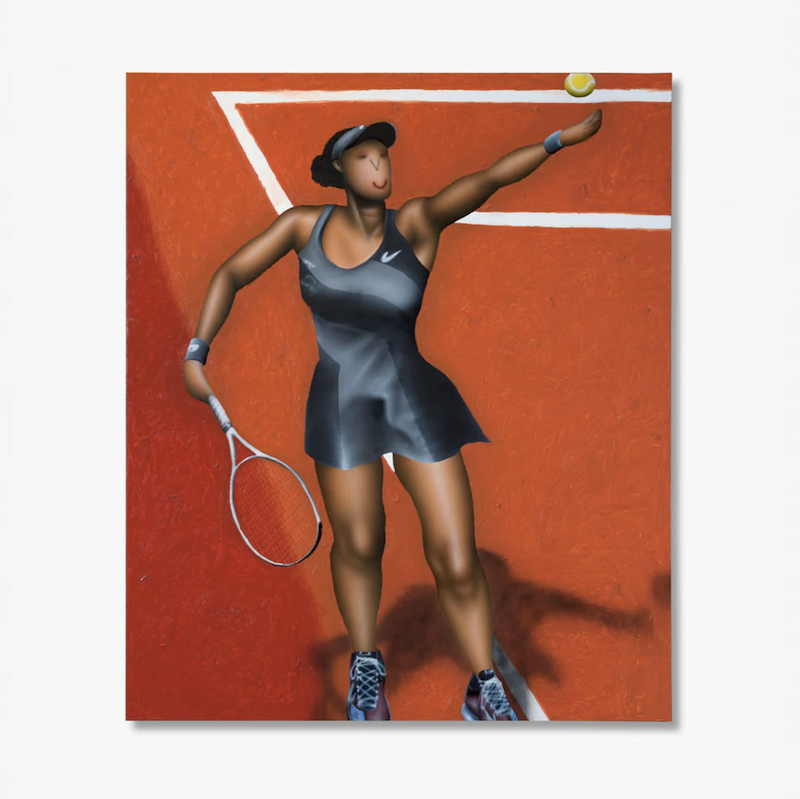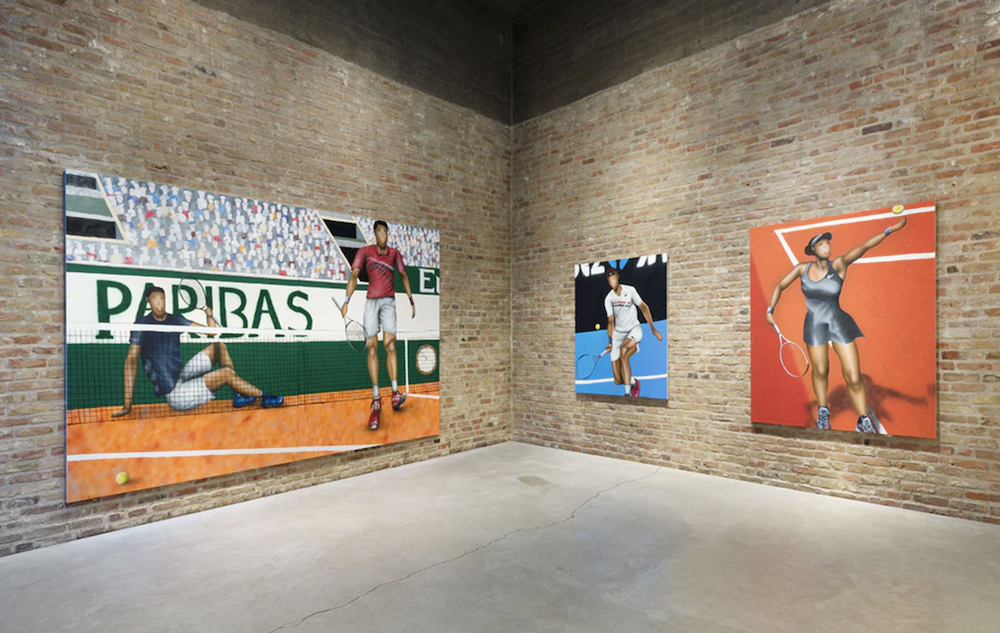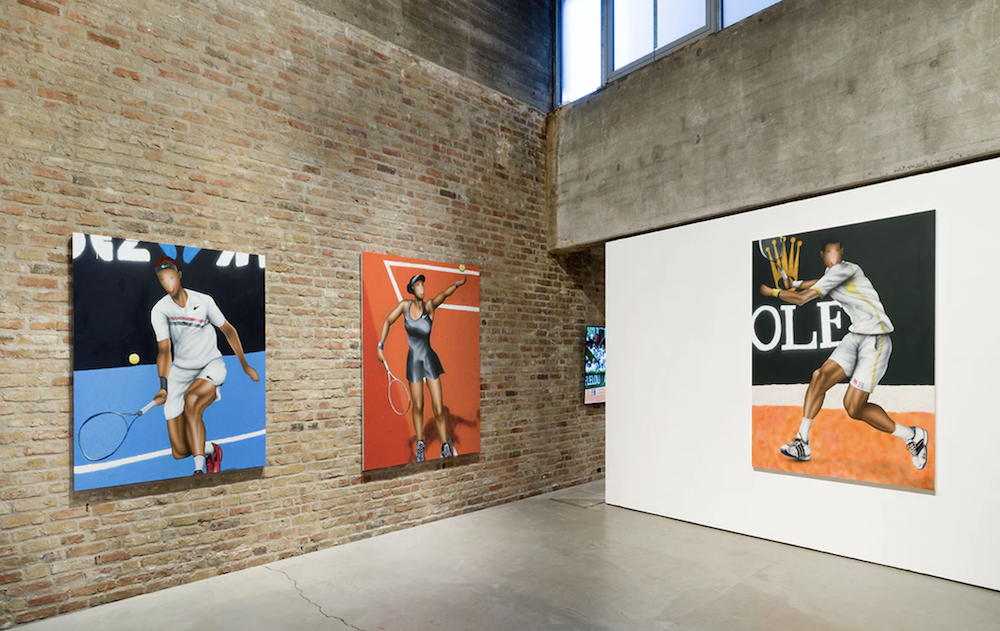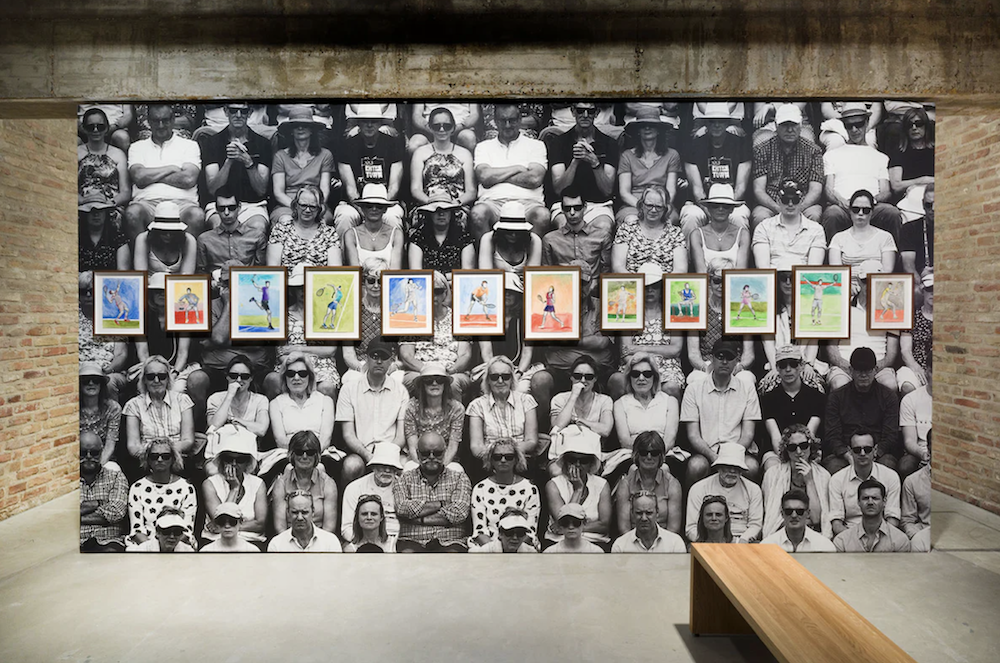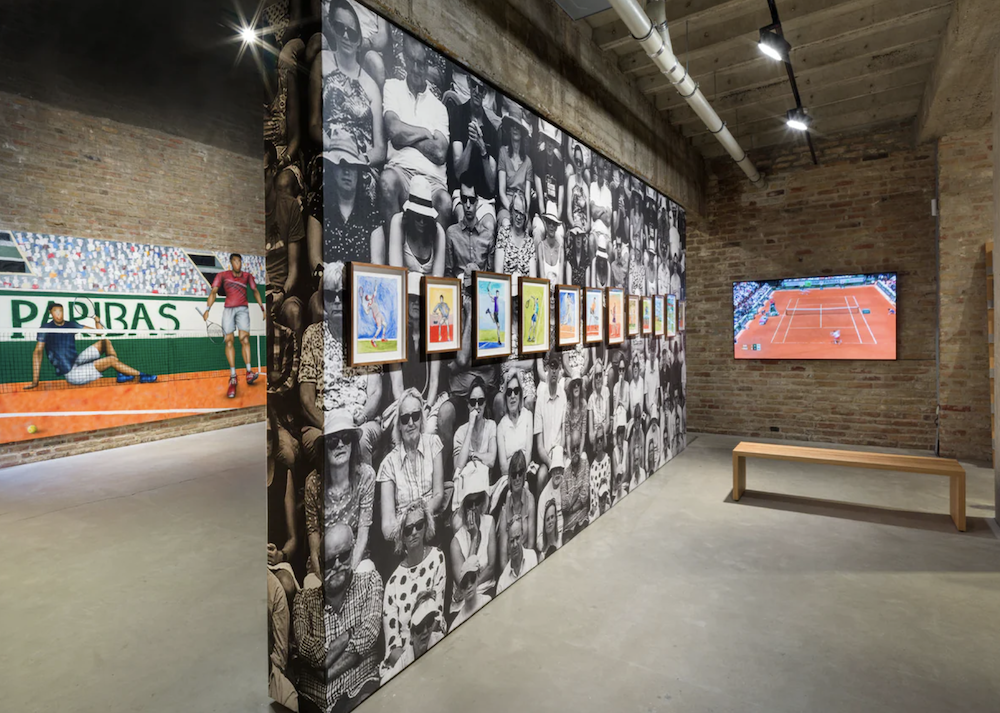KÖNIG GALERIE is pleased to announce the first solo exhibition of Slovenian-born, Berlin-based artist, Evgen Čopi Gorišek, in the Chapel space at St. Agnes in Berlin. Gorišek creates large-format paintings that he crafts with a mixture of traditional techniques and spray-painted characters taken from popular images. For MATCH POINT, Gorišek has made five paintings of single figures, including for the first time, a large, two-part panel depicting two personages. As the title of the show suggests, these are all portraits of tennis players, all of which are drawn from published images, though none a one-to-one recreation. Rather, Gorišek uses the images as blueprints for his designs, changing lighting conditions and bodily definition with each painting.
Gorišek caught the attention of recently passed legendary designer Virgil Abloh, a compliment that pays tribute to the tributary of the young painter’s influences: fashion, tennis, and graffiti culture. Gorišek himself is an avid tennis player, and before turning his attention to the canvas, was also active as a graffiti artist. One of the defining features of his works is the rendering of his characters’ faces, all of which feature a flattened, stylized smiley in lieu of their otherwise iconic countenances. The decision to replace the most recognizable characteristic of a celebrity, in this case, athletes, is manifold. For Gorišek, the face is a mechanism that can both reveal and hide the emotions or inner mood of a particular person, sometimes with little bearing on the actual truth behind the “mask.” Replacing faces with smileys is a uniform, formal choice on the artist’s part, underlining the potential deception of reading a person’s mood based on their appearance. Further, the decision to reduce the curves and contours of a character’s visage into simple shapes is also a means of hunting the painted format back into the two-dimensional representational space of the photographic image, from which they ultimately originate.
Another outcome of the ubiquitous smiley face is that it frees Gorišek to focus his attention on the beauty of the athletic body, where he uses the softness of the spray gun to create dramatic conditions of light and shadow that can only be hinted at through the lens of the camera. These gentle, muted areas of Gorišek’s canvases are contrasted with the priming that the artist employs throughout the process. In these new works, for example, oil stick is used to create an almost tactile, haptic ground for his chosen characters, an effect that has to be experienced in person, lest the digital screen turn all idiosyncrasies of surface into one smooth image.
Gorišek is an artist who manages to incorporate elements of popular image culture – from Instagram to photobooks to catalogues – in the service of a painterly practice that responds to the challenges this culture proposes to the medium. Gorišek uses the flatness, uniformity, and frontality of his images as a starting point for how to begin to recompose them – to present them anew – by being more flat and yet more textured than his sources could ever be. Viewers come face-to-face with characters in near, or greater-than, life-size proportions, an act that paintings still seem uniquely capable of providing. Beneath this facet of painting is the desire to connect or empathize with the subjects represented, which Gorišek redirects toward other, equally interesting sites of attraction by giving his figures the same expression, and with, the lack of any pathos or perceived inner turmoil. And why should he not do so? The camera makes no distinctions, nor do the algorithms that support image platforms, between what is crucial and what is not, what is simply just there and what is meant to be paid attention to. For Gorišek, this is an invitation to rethink the priorities and techniques of athletic portraiture, just ahead of the upcoming Grand Slams.
© Images Roman März

